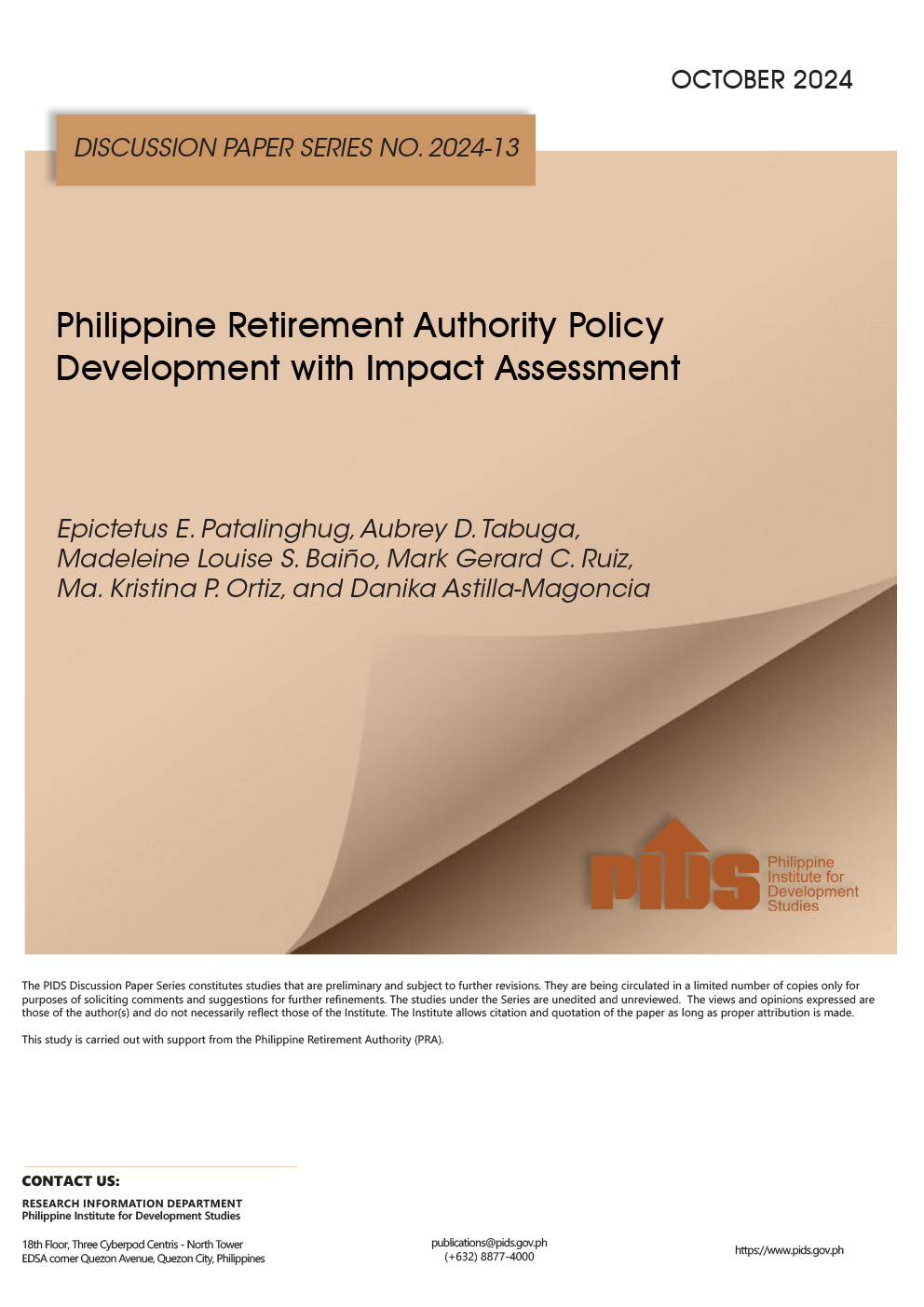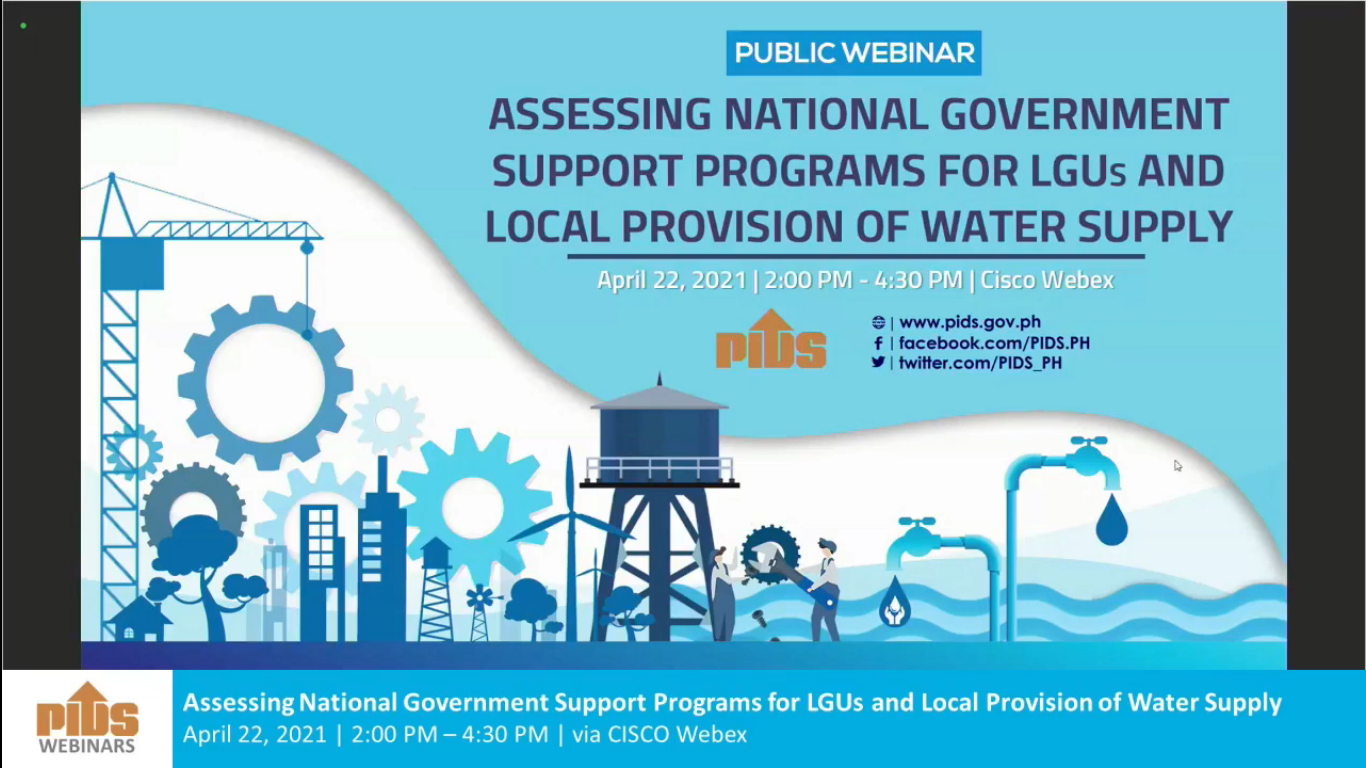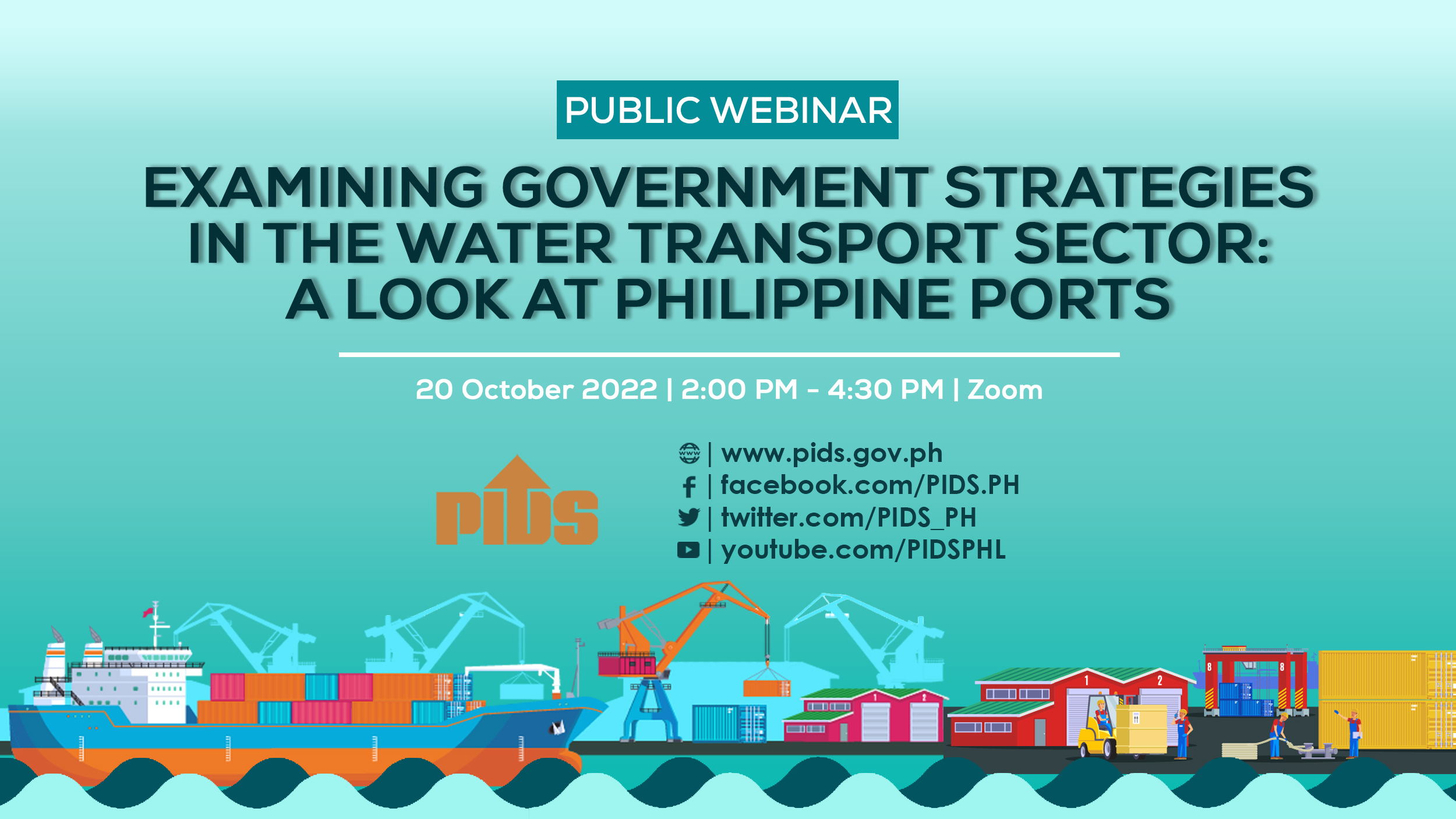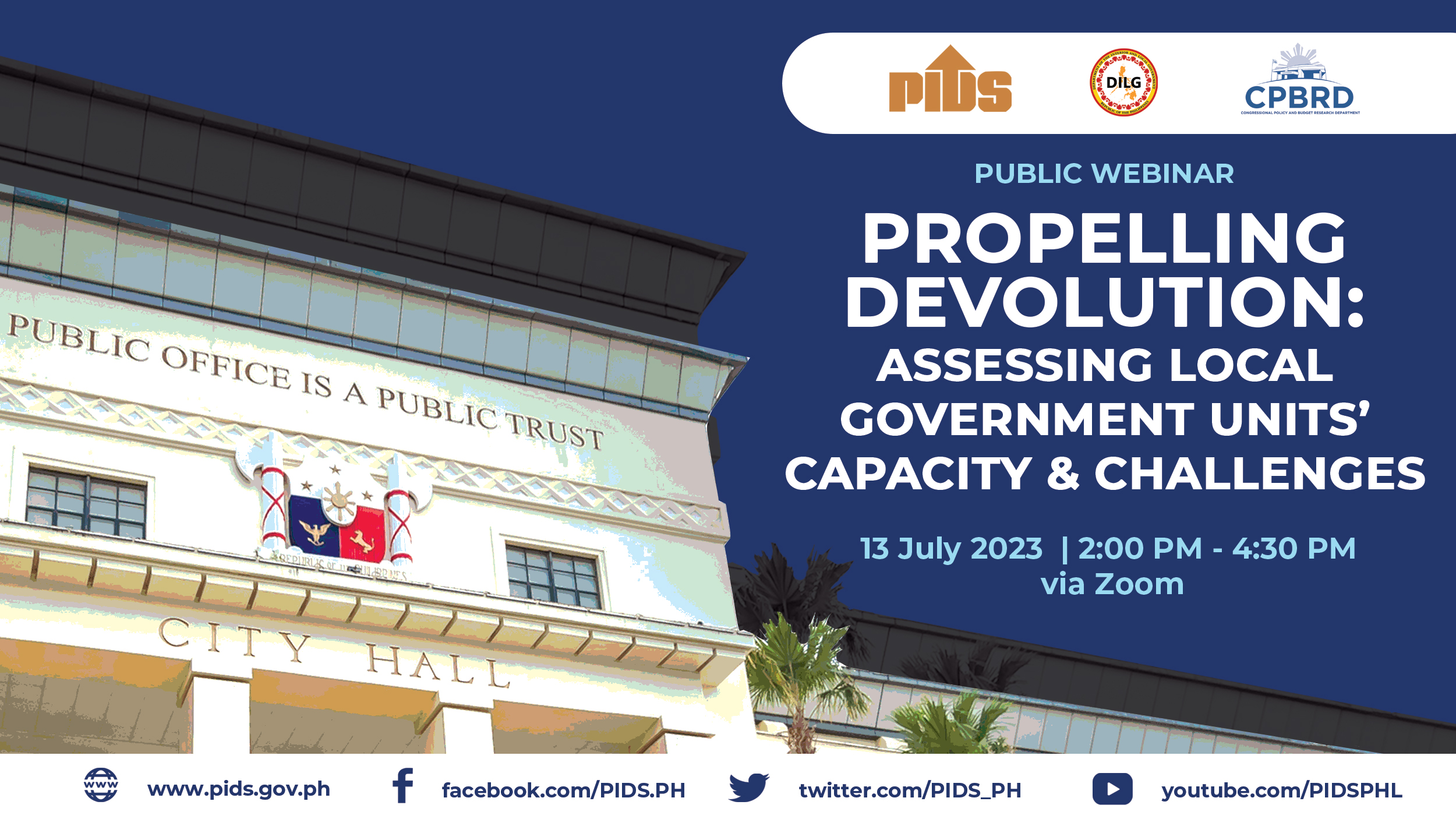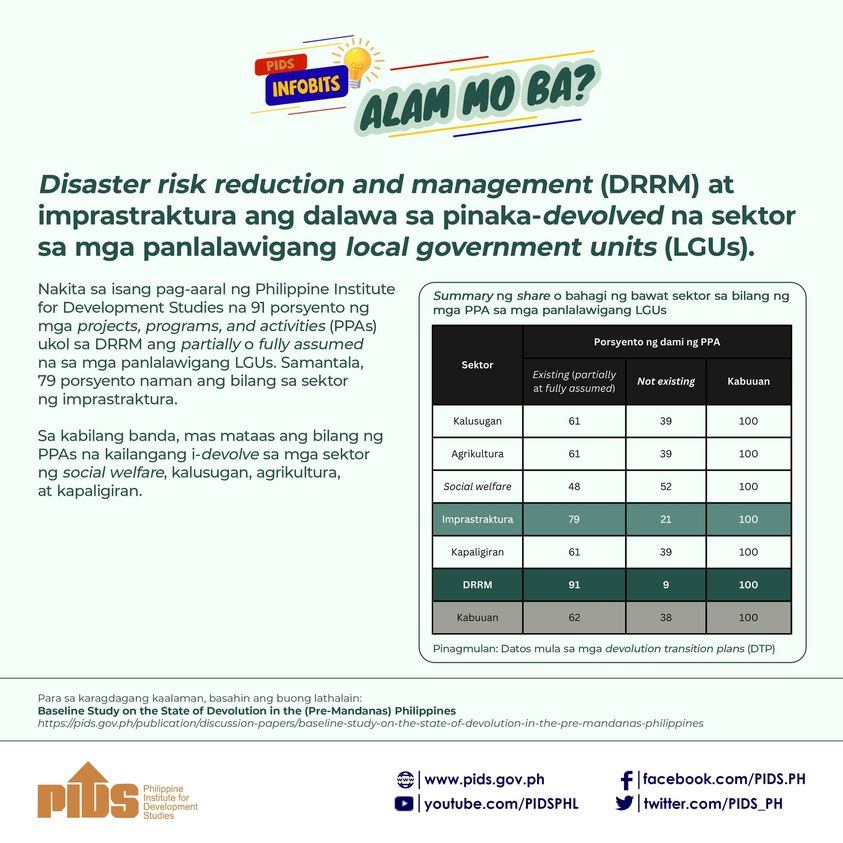When it comes to financing a federal form of government, state-owned think tank Philippine Institute for Development Studies (PIDS) said size matters, with the additional cost to be incurred from running an expanded bureaucracy ranging from P33 billion to P63 billion annually, depending on the structure to be adopted.
On the sidelines of a PIDS forum on Tuesday, PIDS senior research fellow Rosario G. Manasan told the BusinessMirror that government spending for its operations would balloon by at least 0.5 percent of GDP annually under a federal system. Using 2016 figures, Manasan said this translates to about P33 billion to as much as P63 billion worth of additional revenues that needs to be chanelled to the bureaucracy every year.
“This could mean an additional budget, or reallocation, or reduction of the budget for other things,” Manasan told BusinessMirror.
Manasan said if the federal government’s format will follow the structure of the Autonomous Region of Muslim Mindanao (ARMM) under Republic Act 9054, this will add another 812 legislators nationwide.
The ARMM format includes having three legislators elected by popular vote in each legislative district, plus sectoral representatives not exceeding 15 percent of the total number of elected legislators.
The “more expensive” proposal is the one made by former Senator Aquilino Q. Pimentel Jr., which will add 1,356 new legislative officials to the existing bureaucracy.
Under Pimentel’s proposal, there will be three legislators elected by popular vote in each province/city and three sectoral representatives in each province/city.
The most expensive option is the format in the proposed Bangsamoro Basic law (BBL), which would require an additional 2,380 officials.
Under the BBL version, at least 10 legislators per legislative district will be added. Around 40 percent of these officials will be elected by popular vote, 50 percent will be party representatives, and the remaining 10 percent will be composed of sectoral representatives.
“But if the BBL is passed, then that’s it, because it’s just right that the same structure be followed for all state governments,” Manasan said.
But Department of Interior of Local Government Assistant Secretary Epimaco V. Densing added the government is open to adopting a unicameral legislature, or a government that has one parliamentary chamber, which could be cheaper to operate.
“While I recognize the potential additional cost, I just want to say that we will cross the bridge when we get there,” Densing said. “The additional cost under the assumption of Dr. Manasan is we have a presidential and a bicameral system. But our assumption is parliamentary, only one chamber.”
However, Manasan said a bicameral legislature is “nonnegotiable” in a federal form of government, citing countries that are under a federal system.
Manasan explained that the lower chamber is focused on making local laws that the states will need, while the upper chamber, which will be composed of state representatives, will focus on laws that will be implemented nationwide.
“[This is important] in ensuring local governments have a voice in writing laws so that the perspective of regions are also included in the national level legislations. We cannot have only one chamber when we go federal,” Manasan said.
>The shift to a federal form of government was among the many campaign promises of President Duterte. The idea behind this is the wide inequality in terms of growth and development between urban and rural areas.
This is the reason the National Spatial Strategy (NSS) of the administration in the 2017 to 2022 Philippine Development Plan advocated the decentralization of growth and development.
In a presentation, National Economic and Development Authority Undersecretary for Regional Development Office Adoracion M. Navarro said the NSS seeks to strengthen five major urban centers, including Metro Manila, Metro Cebu, Metro Davao and Metro Cagayan de Oro.
There will also be 37 regional centers that have a population of 120,000 to 1.2 million each. Around 22 of these centers will be in Luzon, 10 in Mindanao and five in the Visayas. They will serve as administrative centers, international gateways and tourism hubs.
There will also be 117 subregional centers composed of 74 locales in Luzon, 27 in Mindanao and 16 in the Visayas. These subregional centers will all be guided in tackling challenges of urbanization and other development needs.
These subregional centers will act as tourism, agri-industrial, industrial and higher-education learning centers/hubs.
On the sidelines of a PIDS forum on Tuesday, PIDS senior research fellow Rosario G. Manasan told the BusinessMirror that government spending for its operations would balloon by at least 0.5 percent of GDP annually under a federal system. Using 2016 figures, Manasan said this translates to about P33 billion to as much as P63 billion worth of additional revenues that needs to be chanelled to the bureaucracy every year.
“This could mean an additional budget, or reallocation, or reduction of the budget for other things,” Manasan told BusinessMirror.
Manasan said if the federal government’s format will follow the structure of the Autonomous Region of Muslim Mindanao (ARMM) under Republic Act 9054, this will add another 812 legislators nationwide.
The ARMM format includes having three legislators elected by popular vote in each legislative district, plus sectoral representatives not exceeding 15 percent of the total number of elected legislators.
The “more expensive” proposal is the one made by former Senator Aquilino Q. Pimentel Jr., which will add 1,356 new legislative officials to the existing bureaucracy.
Under Pimentel’s proposal, there will be three legislators elected by popular vote in each province/city and three sectoral representatives in each province/city.
The most expensive option is the format in the proposed Bangsamoro Basic law (BBL), which would require an additional 2,380 officials.
Under the BBL version, at least 10 legislators per legislative district will be added. Around 40 percent of these officials will be elected by popular vote, 50 percent will be party representatives, and the remaining 10 percent will be composed of sectoral representatives.
“But if the BBL is passed, then that’s it, because it’s just right that the same structure be followed for all state governments,” Manasan said.
But Department of Interior of Local Government Assistant Secretary Epimaco V. Densing added the government is open to adopting a unicameral legislature, or a government that has one parliamentary chamber, which could be cheaper to operate.
“While I recognize the potential additional cost, I just want to say that we will cross the bridge when we get there,” Densing said. “The additional cost under the assumption of Dr. Manasan is we have a presidential and a bicameral system. But our assumption is parliamentary, only one chamber.”
However, Manasan said a bicameral legislature is “nonnegotiable” in a federal form of government, citing countries that are under a federal system.
Manasan explained that the lower chamber is focused on making local laws that the states will need, while the upper chamber, which will be composed of state representatives, will focus on laws that will be implemented nationwide.
“[This is important] in ensuring local governments have a voice in writing laws so that the perspective of regions are also included in the national level legislations. We cannot have only one chamber when we go federal,” Manasan said.
>The shift to a federal form of government was among the many campaign promises of President Duterte. The idea behind this is the wide inequality in terms of growth and development between urban and rural areas.
This is the reason the National Spatial Strategy (NSS) of the administration in the 2017 to 2022 Philippine Development Plan advocated the decentralization of growth and development.
In a presentation, National Economic and Development Authority Undersecretary for Regional Development Office Adoracion M. Navarro said the NSS seeks to strengthen five major urban centers, including Metro Manila, Metro Cebu, Metro Davao and Metro Cagayan de Oro.
There will also be 37 regional centers that have a population of 120,000 to 1.2 million each. Around 22 of these centers will be in Luzon, 10 in Mindanao and five in the Visayas. They will serve as administrative centers, international gateways and tourism hubs.
There will also be 117 subregional centers composed of 74 locales in Luzon, 27 in Mindanao and 16 in the Visayas. These subregional centers will all be guided in tackling challenges of urbanization and other development needs.
These subregional centers will act as tourism, agri-industrial, industrial and higher-education learning centers/hubs.


